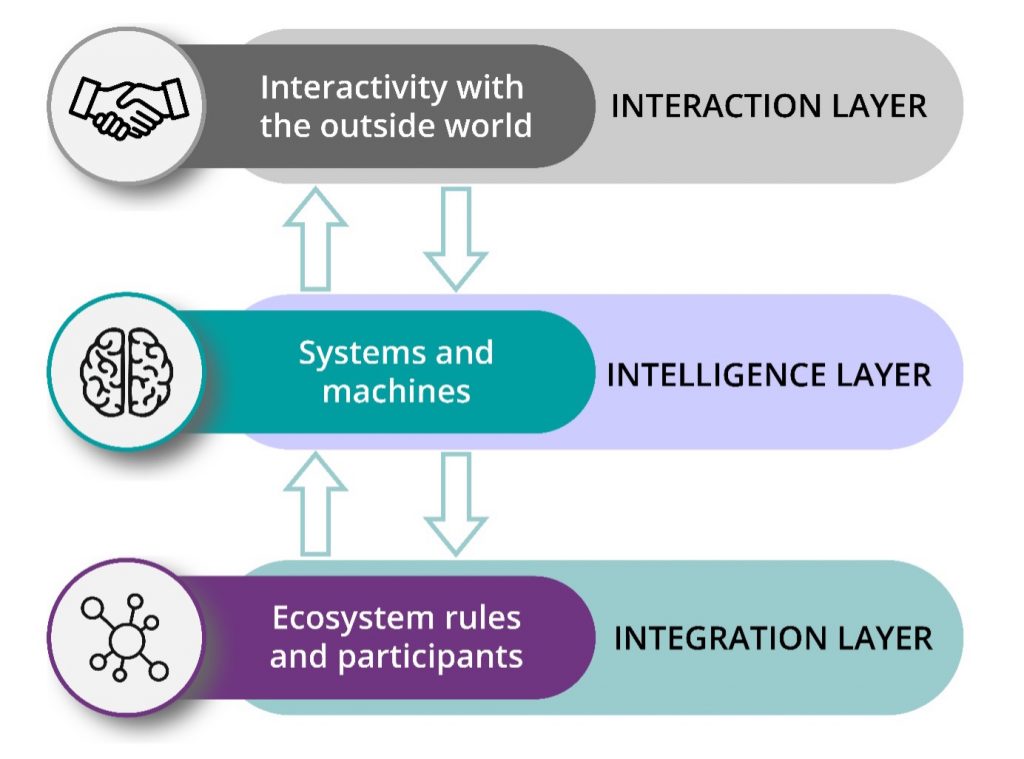This is part 7 of our 10-part blog series on Ecosystems. You can find the other blogs in the series here.
A business ecosystem consists of many players. As outlined in the book The Keystone Advantage1, the key players in a business ecosystem are the dominators, the landlords, and the niche players, and not all of them will be present in an ecosystem at one single point of time. Keystones act as the hub in a network of ecosystem interactions and are seen as the platform for an ecosystem; the dominators of the ecosystem absorb and integrate external assets into internal operations, whereas landlords emphasize vertical and horizontal integration and focus on extracting maximum value from the system. Niche players develop and provide specialized capabilities that are highly differentiated from the other niche providers in the ecosystem. The best example of a keystone is Microsoft, the erstwhile Enron is an example of a dominator, Apple is an example of a good landlord.
While the role played by the different stakeholders vary across ecosystems, we believe that all ecosystems follow a three-tiered layer architecture, which can be called as the 3-I layer – the interaction layer, the intelligence layer, and the integration layer.

The Integration Layer
This layer consists of all the stakeholders in an ecosystem connected with each other through a series of interactions and rules. These interactions may be through the APIs or through other mechanisms defined as part of the governance of the ecosystem. We can consider this ecosystem as a network which integrates all the participants of the ecosystem. This layer consists of the participants of the ecosystem and the rules that govern the ecosystem and therefore we can consider this layer as the foundation of the ecosystem.
It is important to understand that the primary goal for the integration layer is to drive connectivity between the ecosystem stakeholders in an optimum way, so that outcome is maximized at the optimum cost while ensuring the right balance between various ecosystem models.
Let us consider the example of Amazon e-commerce marketplace. The integration layer consists of Amazon, the buyers, the sellers, the different partners that Amazon works with to drive the supply chain, the regulators, and other partners of Amazon. Each of the participants in this Amazon ecosystem are connected through a set of rules – be it the APIs or a set of contracts between the different parties.
The Intelligence Layer
While the integration layer defines the participants and the connections between them, the success of any ecosystem depends on how the participants of an ecosystem use the resources available to them to efficiently create maximum value to all the stakeholders.
The intelligence layer consists of a set of machines and systems that help the ecosystem achieve its goals. The intelligence layer acts as the de-facto brain of the ecosystem and drives the flow of information between the participants by being part of the transactions that happen between them.
The intelligence layer measures, monitors, and manages each of the transactions, and helps the ecosystem deliver maximum value to its stakeholder and drives self-alignment and sustainable growth of the ecosystem.
The primary goal of the intelligence layer is to drive efficiency and continuous improvement.
In the case of the Amazon example that we saw earlier, the algorithms that drive the Amazon marketplace, including the A9 algorithm2, the AWS platform, rating engine in the Amazon marketplace, are all part of this intelligence layer. The intelligence layer and the success of it in achieving its stated objectives is what creates a sense of differentiation from other ecosystems.
The Interaction Layer
While the integration layer provides the foundation and acts as the network for all components of an ecosystem, and the intelligence layer acts as the brain of the ecosystem, there is a need for a layer in the ecosystem which interacts with the outside world. This is where the interaction layer plays a pivotal role.
The interaction layer is not meant to be a one-way communication tool. The interaction layer is a platform to provide transparency about the progress of the key components of the ecosystem.
While the goal of the integration layer was to create connectivity, and the goal of the intelligence layer was to create efficiency, the goal of the interaction layer is to ensure simplicity and transparency.